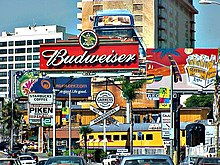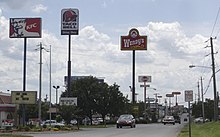Agung Sedayu Group adalah pengembang properti yang terkenal di Indonesia dengan fokus pengembangan lahan di bidang retail, komersial, perumahan dan apartemen.
Dengan pengalaman lebih dari 40 tahun dibidangnya, Agung Sedayu Group selalu memberikan pilihan lokasi yang terbaik dengan nilai investasi yang menguntungkan.
Berawal dari sebuah perusahaan kontraktor rumah pertokoan sederhana yang didirikan pada tahun 1970. Selama 10 tahun pertama, AGUNG SEDAYU bekerja keras untuk membangun kepercayaan para pembeli dan meningkatkan kerjasama dengan partner terkemuka di Indonesia. Pada tahun 1991, mulai membangun HARCO MANGGA DUA, mal yang khusus menyediakan barang-barang elektronik pertama di Jakarta.Dengan pengalaman lebih dari 40 tahun dibidangnya, Agung Sedayu Group selalu memberikan pilihan lokasi yang terbaik dengan nilai investasi yang menguntungkan.
Kesuksesan tersebut membuat AGUNG SEDAYU membangun hunian-hunian dan kompleks komersil seperti Taman Palem yang dibangun diatas tanah sebesar 1500 hektar dan Apartement Seaview yang mewah.
Setelah berhasil melewati masa krisis moneter di Asia, AGUNG SEDAYU sekali lagi mengambil inisiatif untuk membangun beberapa Mega Proyek di Jakarta seperti salah satunya KELAPA GADING SQUARE (One Stop Living Concept).
Perjalanan panjang tersebut telah membentuk AGUNG SEDAYU menjadi sebuah perusahaan yang kuat dan menjadikan Kami perusahaan terkemuka di Indonesia.
AGUNG SEDAYU menyediakan berbagai cakupan produk-produk inovatif yang secara khusus disesuaikan dengan kebutuhan para investor.
AGUNG SEDAYU merupakan salah satu properti developer terkemuka di Indonesia. Kepercayaan para pembeli terhadap pelayanan yang diberikan selama lebih dari 30 tahun, telah menjadikan AGUNG SEDAYU sebagai developer terpercaya dan menjadi inspirasi bagi developer-developer lainnya.
Pengetahuan mendalam mengenai pangsa pasar dan kemampuan menanggulangi masalah secara bijaksana merupakan tonggak kesuksesan AGUNG SEDAYU.
AGUNG SEDAYU berawal dari sebuah perusahaan keluarga yang kemudian sekarang telah menjadi sebuah perusahaan profesional tanpa meninggalkan nilai-nilai utamanya yang berharga yaitu Kepercayaan dan Kesempurnaan.
Kekuatan AGUNG SEDAYU dibangun dari kredibilitas dan efisiensinya yang telah tertanam sejak dahulu kala. AGUNG SEDAYU telah meningkatkan ketepatan waktu, kesempurnaan, inovasi bagi pembeli dan telah mendapatkan penghargaan dari masyarakan umum.
AGUNG SEDAYU menganggap reputasi terhadap dedikasi dan kejujuran sama berharganya dengan berlian yang transparan, apabila terjadi sedikit kesalahan maka masyarakat akan mengetahuinya walaupun mereka terkesima akan kemilau berlian tersebut.
AGUNG SEDAYU sangat mengerti terhadap apa yang menjadi nilai yang paling berharga dan secara terus menerus mempertahankannya dan menjadikan AGUNG SEDAYU sebagai partner kerja sama yang menjanjikan dan berharga dalam bisnis properti. Sumber: Agung Sedayu Group **SAB**
AGUNG SEDAYU merupakan salah satu properti developer terkemuka di Indonesia. Kepercayaan para pembeli terhadap pelayanan yang diberikan selama lebih dari 30 tahun, telah menjadikan AGUNG SEDAYU sebagai developer terpercaya dan menjadi inspirasi bagi developer-developer lainnya.
Pengetahuan mendalam mengenai pangsa pasar dan kemampuan menanggulangi masalah secara bijaksana merupakan tonggak kesuksesan AGUNG SEDAYU.
AGUNG SEDAYU berawal dari sebuah perusahaan keluarga yang kemudian sekarang telah menjadi sebuah perusahaan profesional tanpa meninggalkan nilai-nilai utamanya yang berharga yaitu Kepercayaan dan Kesempurnaan.
Kekuatan AGUNG SEDAYU dibangun dari kredibilitas dan efisiensinya yang telah tertanam sejak dahulu kala. AGUNG SEDAYU telah meningkatkan ketepatan waktu, kesempurnaan, inovasi bagi pembeli dan telah mendapatkan penghargaan dari masyarakan umum.
AGUNG SEDAYU menganggap reputasi terhadap dedikasi dan kejujuran sama berharganya dengan berlian yang transparan, apabila terjadi sedikit kesalahan maka masyarakat akan mengetahuinya walaupun mereka terkesima akan kemilau berlian tersebut.
AGUNG SEDAYU sangat mengerti terhadap apa yang menjadi nilai yang paling berharga dan secara terus menerus mempertahankannya dan menjadikan AGUNG SEDAYU sebagai partner kerja sama yang menjanjikan dan berharga dalam bisnis properti. Sumber: Agung Sedayu Group **SAB**
 A billboard (sometimes also called a hoarding in the UK and many other parts of the world) is a large outdoor advertising
A billboard (sometimes also called a hoarding in the UK and many other parts of the world) is a large outdoor advertising Almost all these billboards were painted in large studios. The image was projected on the series of paper panels that made up the billboard. Line drawings were done, then traced with a pounce wheel that created perforated lines. The patterns were then "pounced" onto the board with a chalk filled pounce bag, marking the outlines of the figures or objects. Then, using oil paints, the artists would actually use large brushes to paint the image. Once the panels were installed using large hydraulic booms on trucks, the artists would go up on the installed billboard and touch up the edges between the panels. These large, painted billboards were especially popular in Los Angeles where historic firms such as Foster & Kleiser and Pacific Outdoor Advertising dominated the industry. Eventually, these painted billboards gave way to graphic reproduction, but hand-painted billboards are still in use in some areas where only a single board or two is required. The "Sunset Strip
Almost all these billboards were painted in large studios. The image was projected on the series of paper panels that made up the billboard. Line drawings were done, then traced with a pounce wheel that created perforated lines. The patterns were then "pounced" onto the board with a chalk filled pounce bag, marking the outlines of the figures or objects. Then, using oil paints, the artists would actually use large brushes to paint the image. Once the panels were installed using large hydraulic booms on trucks, the artists would go up on the installed billboard and touch up the edges between the panels. These large, painted billboards were especially popular in Los Angeles where historic firms such as Foster & Kleiser and Pacific Outdoor Advertising dominated the industry. Eventually, these painted billboards gave way to graphic reproduction, but hand-painted billboards are still in use in some areas where only a single board or two is required. The "Sunset Strip Billboard advertisements are designed to catch a person's attention and create a memorable impression very quickly, leaving the reader thinking about the advertisement after they have driven past it. They have to be readable in a very short time because they are usually read while being passed at high speeds. Thus there are usually only a few words, in large print, and a humorous or arresting image in brilliant color.
Billboard advertisements are designed to catch a person's attention and create a memorable impression very quickly, leaving the reader thinking about the advertisement after they have driven past it. They have to be readable in a very short time because they are usually read while being passed at high speeds. Thus there are usually only a few words, in large print, and a humorous or arresting image in brilliant color. A digital billboard
A digital billboard Outdoor Advertising, such as a Mobile Billboard, is effective because it’s hard to ignore. According to a UK national survey, it’s also memorable. Capitol Communications Group found that 81.7 percent of those polled recalled images they saw on a moving multi-image sign. This is compared to a 19 percent retention rate for static signs.
Outdoor Advertising, such as a Mobile Billboard, is effective because it’s hard to ignore. According to a UK national survey, it’s also memorable. Capitol Communications Group found that 81.7 percent of those polled recalled images they saw on a moving multi-image sign. This is compared to a 19 percent retention rate for static signs. An inflatable billboard is an inflatable framework with an attached banner ad. Most of them famously appear near sports events or exhibitions. Inflatable billboards can be installed nearly everywhere standing free. They are secured with counter weights and tensioning ropes.
An inflatable billboard is an inflatable framework with an attached banner ad. Most of them famously appear near sports events or exhibitions. Inflatable billboards can be installed nearly everywhere standing free. They are secured with counter weights and tensioning ropes. Some billboards are not used only for advertising ends; they can be multi-purpose, meaning that they can have more than one function. So, an advertising sign can integrate its main purpose with telecommunications antenna and/or public lighting support. Usually the structure has a steel pole with a coupling flange on the above-fitted advertising billboard structure that can contain telecommunications antennas. The lighting power supply cables and any possible antennas are placed inside of the structure and fastened on appropriate steel wires.
Some billboards are not used only for advertising ends; they can be multi-purpose, meaning that they can have more than one function. So, an advertising sign can integrate its main purpose with telecommunications antenna and/or public lighting support. Usually the structure has a steel pole with a coupling flange on the above-fitted advertising billboard structure that can contain telecommunications antennas. The lighting power supply cables and any possible antennas are placed inside of the structure and fastened on appropriate steel wires. Other types of billboards include the billboard bicycle
Other types of billboards include the billboard bicycle
 Not all billboards are used for advertising products and service- non profit group
Not all billboards are used for advertising products and service- non profit group